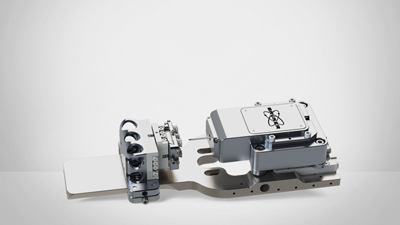

In-Situ SEM Nanomechanics: Innovations and Advances
The latest advances in in-situ SEM nanoindentation testing
In this webinar, presenters cover recent advances in in-situ nanomechanics testing, highlighting a case study on fracture toughness in nitride hard coatings. They also introduce the PI 89 Auto PicoIndenter—which automates nanoindentation mapping for correlating microstructure with mechanical properties—and explore processing-structure-mechanical property relationships using this high-throughput in-situ system.
Watch this on-demand webinar to see:
- Research on the influence of columnar grain boundaries on the fracture toughness of nitride hard coatings, determined using in-situ SEM microcantilever fracture tests
- An introduction to the PI 89 Auto PicoIndenter for streamlined correlation of microstructure and mechanical properties
- Evaluation of processing-structure-property relationships in structural materials as determined using PI 89 Auto to correlate EBSD, EDS, and nanoindentation maps
Guest Speaker Abstract
Microfracture Mechanics in Hard Coatings: Influence of Columnar Grain Boundaries
This study investigates the influence of columnar grain boundaries on the fracture toughness of nitride hard coatings using in situ SEM microcantilever fracture tests with bridge-notch geometries. Fracture behavior was evaluated under different loading directions—parallel and perpendicular to the coating growth. Results indicate that notches aligned perpendicular to the grain boundaries increase fracture toughness by approximately 10% due to crack deflection. Additionally, fracture toughness in columnar-grained regions was over 30% lower compared to epitaxially-grown microstructures, highlighting the need for grain boundary toughening to enhance the performance of hard coatings.
Find out more about the technology featured in this webinar or our other solutions for in-situ SEM nanoindentation testing :
Bruker Speaker Abstract
High-Throughput Correlation of Microstructure-Mechanical Property Relationships in Structural Materials
Nanoindentation mapping is an ideal technique for correlating mechanical properties with local chemistry and microstructure but suffers from the slow process of manually aligning separately measured maps. Here, we discuss the PI 89 Auto Picoindenter, a system designed to streamline the process of correlating microstructure with mechanical properties using an automated, high throughput in situ nanoindentation testing method. The system is used to assess the microstructure via electron backscatter diffraction (EBSD) and energy dispersive spectroscopy (EDS) before rotating toward the nanoindenter probe for nanomechanical mapping. We will discuss the processing-structure-mechanical property relationships in structural materials measured with this system.
Date: Tuesday, November 12
Featured Technologies:
Featured Products and Technology
Speakers
Subin Lee, Ph.D., Group leader, Applied Materials, Karlsruhe Institute of Technology
Subin earned a Ph.D. in Materials Science and Engineering from Pohang University of Science and Technology in South Korea in 2016. From 2017 to 2021, he worked as a postdoctoral researcher at the Max Planck Institute für Eisenforschung in Germany, where he was awarded the Alexander von Humboldt Fellowship. Since 2021, he has been a group leader at the Karlsruhe Institute of Technology’s Institute for Applied Materials, leading the in situ microscopy group. His research focuses on dislocation plasticity and in situ electron microscopy, with a particular emphasis on plastic deformation mechanisms at the micro- and nanoscale.
Kevin Schmalbach, Ph.D., Instrumentation Scientist, Nanoindentation Unit, Bruker
Kevin earned his PhD in Chemical Engineering from the University of Minnesota in 2022 with his thesis focusing on the study of temperature and strain rate effects in tungsten. He then joined the applications group as a postdoctoral scientist at Bruker, where he developed the PI 89 Auto capabilities. He has recently moved into an instrumentation scientist role in the research and development group, focusing on hardware and technique development for nanoindentation.


